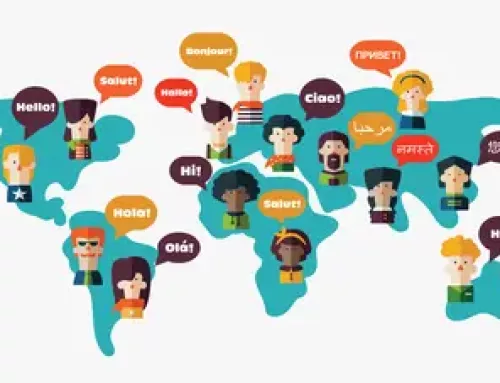
Meta tags play a crucial role in ensuring that the various pages of a website are optimised for search engines. They are a key element of web copywriting and SEO translation, whatever the business’s aim may be: lead generation, online sales, monetisation through content, etc.
In this article, we will explore everything to do with meta tags and SEO, and of course find out why they are so important in website translation. Translation agencies specialised in website translation are already well versed in this subject. These are the topics we will be covering:
- Definition of meta tags
- Meta tags every SEO translator or copywriter should know
- The role of meta tags in website translation
1) Definition and role of meta tags for SEO
Meta tags are snippets of text integrated into a page’s html code to inform search engines and internet users of what the page’s content is about.
Optimal meta tags will enable search engines to understand what a web page is about more quickly and easily, so that they can associate it with a set of search expressions in the same semantic field. The goal in SEO is for pages to be optimised enough so that search engines include them among the first results for the keywords searched by the user. A web page’s position depends on a lot of factors, not just meta tags, but they are key in order to build solid SEO foundations.
Meanwhile, sufficiently clear tags will allow internet users to discern whether or not the results presented by Google and other search engines in response to their search are what they are looking for. Once the user visits a specific page, good meta tags will help them to filter the content and decide whether they are going to find what they need.
2) Meta tags every SEO translator or copywriter should know
There are all sorts of meta tags. Here are the key ones any page needs to guarantee good SEO:
Title tag: This is the famous blue link we see on search engine results pages (SERP) when searching for something online. This tag must include the keyword or key expression corresponding to what the page is about. It needs to be 70 characters or fewer and should be integrated into the head part of the html code. Each page of a website should be associated with a unique search expression. The mistake of using the same keyword across several pages should be avoided. This leads to pages cannibalisation and is harmful to a website’s SEO.
Here is an example: <title> Girls’ red silk dress. All sizes. Girl Boutique </title>
Search engines look out for this tag when indexing pages (in Google index, in the case of Google).
Meta description: this tag is the text found after the ‘title’ meta tag. So, we see it on the search engines results page (SERP). Like the ‘title’ tag, it must be included in the head the html code and must not exceed 155 characters. Though Google does not take this element into account when indexing pages, it is essential in order to expand on the information found in the title tag and encourage internet users to visit the page.
Here is an example:Browse our wide range of girls’ red silk dresses. Available in various sizes. Delivery in 24 hours across the UK</meta description>
Here is a more visual example of how these two tags appear on the SERP:

Hn tags: these tags help you to structure and prioritise the content on a page. They are included in thesection and are used for the headings of each subtopic (h1, h2, h3, and so on). Hn tags must include keywords in the same semantic field as the page’s overall subject. The h1 tag corresponds to the main heading. It is the most important of the hn tags and there must be just one per page. It should not be confused with the ‘title’ tag. There can be more than one of the hn tags from h2 onwards, but they need to be presented in order.
An example:
H1 Spanish omelette recipe
H2 Ingredients in a Spanish omelette
H2 Steps to make a Spanish omelette
H2 Side dishes for a Spanish omelette
H3 Salads
H3 Proteins
H2 How to serve a Spanish omelette
Alt tag: Also known as an alt attribute, this is a description of the images that illustrate the page content (product images, illustrations of services, graphs, etc.). Its aim is to position your visual content optimally in Google Images, as well as making your page accessible to people with a visual impairment. This tag needs to be a short text that includes a keyword in the same semantic field as the content with which it is associated. An example:
< img src=”image.jpg” alt=”spanish-omelette”/>
Not all images require an alt tag (e.g. icons or decorative images that are unimportant for your website’s SEO).
Other important meta tags for SEO
There are other important meta tags for SEO, but we won’t discuss them here because they aren’t the responsibility of the web copywriter or SEO translator. Here are their names, in case you want to do some research:
- Canonical tag
- Robots meta tag
- Open graph
- Hreflang tags
- Structured data tags (schema.org)
3) The role of meta tags in website translation
In an article we published on the steps in the SEO translation process, we talked about a semantic analysis of the competition and identification of keywords in your sector. Well, the team of translators at an agency specialised in website translation will use the results of this analysis as a basis to translate the different meta tags mentioned above in the most effective way. To do so, they will consider the search volume of the various keywords generated by the analysis, so that they can identify the main keyword in the target language and the semantic field around it. They will then use this information to choose the perfect ‘title’ tag, as well as all the other meta tags.
It is important to remember that a good translation is one that is read by a native speaker of the target language as though it were content originally written in their language. This ability to translate content so that it sounds natural and expertise in essential criteria for success in web copywriting (including meta tags) are the key to producing a translation that is optimal both for search engines and in the internet user’s eyes. For this reason, it is crucial to invest in this process and call upon professionals with plenty of experience in website translation.






